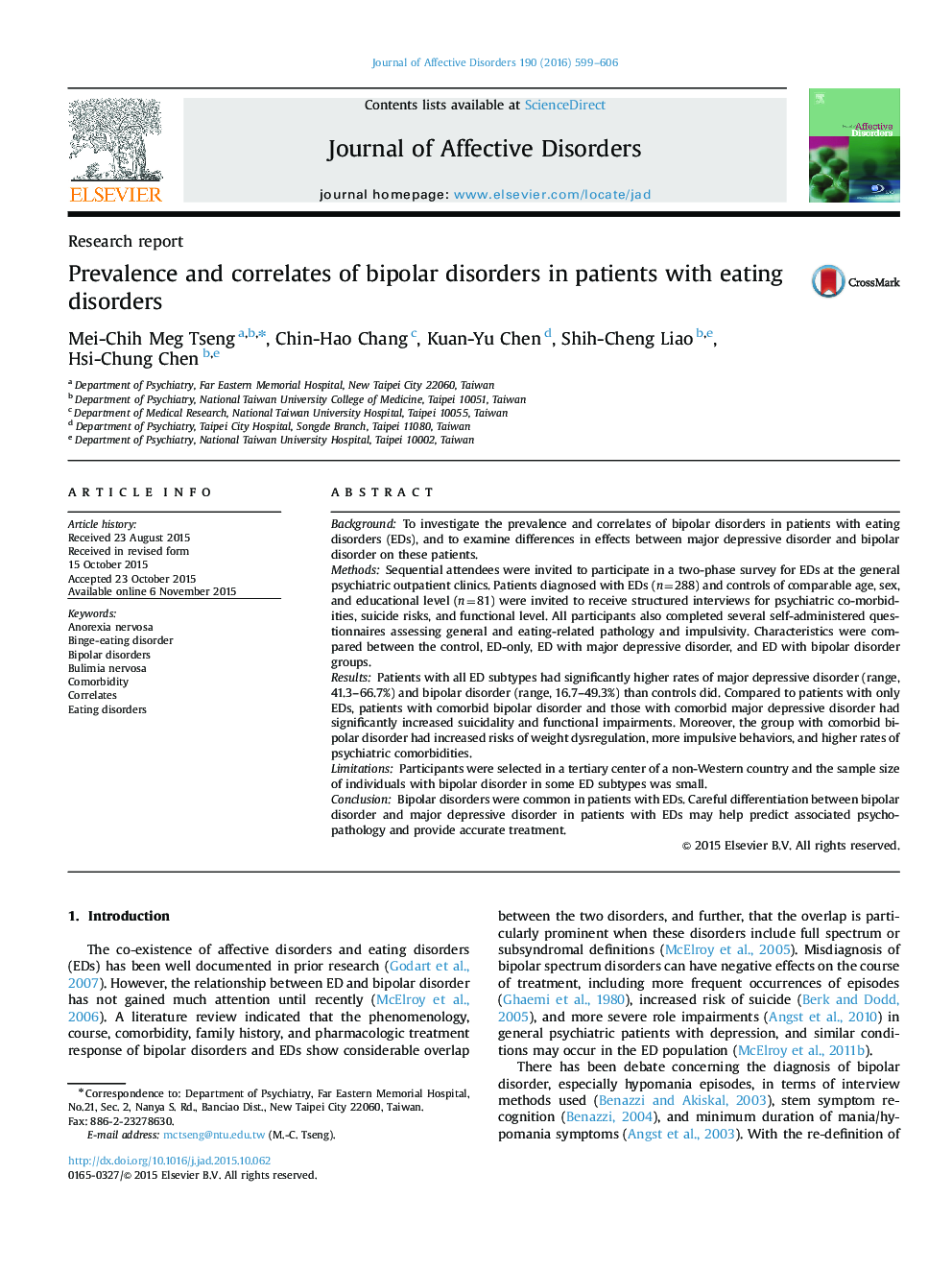| کد مقاله | کد نشریه | سال انتشار | مقاله انگلیسی | نسخه تمام متن |
|---|---|---|---|---|
| 6230794 | 1608135 | 2016 | 8 صفحه PDF | دانلود رایگان |
- We used two-phase survey for eating disorder in the psychiatric outpatients.
- We examine the correlates of bipolar disorders in outpatients with eating disorders.
- ED patients had significantly higher rates of bipolar disorder than controls did.
- Comorbidity with bipolar disorder increased risks of suicide and impairments.
- It increased risks of more impulsive behaviors and psychiatric comorbidities
BackgroundTo investigate the prevalence and correlates of bipolar disorders in patients with eating disorders (EDs), and to examine differences in effects between major depressive disorder and bipolar disorder on these patients.MethodsSequential attendees were invited to participate in a two-phase survey for EDs at the general psychiatric outpatient clinics. Patients diagnosed with EDs (n=288) and controls of comparable age, sex, and educational level (n=81) were invited to receive structured interviews for psychiatric co-morbidities, suicide risks, and functional level. All participants also completed several self-administered questionnaires assessing general and eating-related pathology and impulsivity. Characteristics were compared between the control, ED-only, ED with major depressive disorder, and ED with bipolar disorder groups.ResultsPatients with all ED subtypes had significantly higher rates of major depressive disorder (range, 41.3-66.7%) and bipolar disorder (range, 16.7-49.3%) than controls did. Compared to patients with only EDs, patients with comorbid bipolar disorder and those with comorbid major depressive disorder had significantly increased suicidality and functional impairments. Moreover, the group with comorbid bipolar disorder had increased risks of weight dysregulation, more impulsive behaviors, and higher rates of psychiatric comorbidities.LimitationsParticipants were selected in a tertiary center of a non-Western country and the sample size of individuals with bipolar disorder in some ED subtypes was small.ConclusionBipolar disorders were common in patients with EDs. Careful differentiation between bipolar disorder and major depressive disorder in patients with EDs may help predict associated psychopathology and provide accurate treatment.
Journal: Journal of Affective Disorders - Volume 190, 15 January 2016, Pages 599-606
